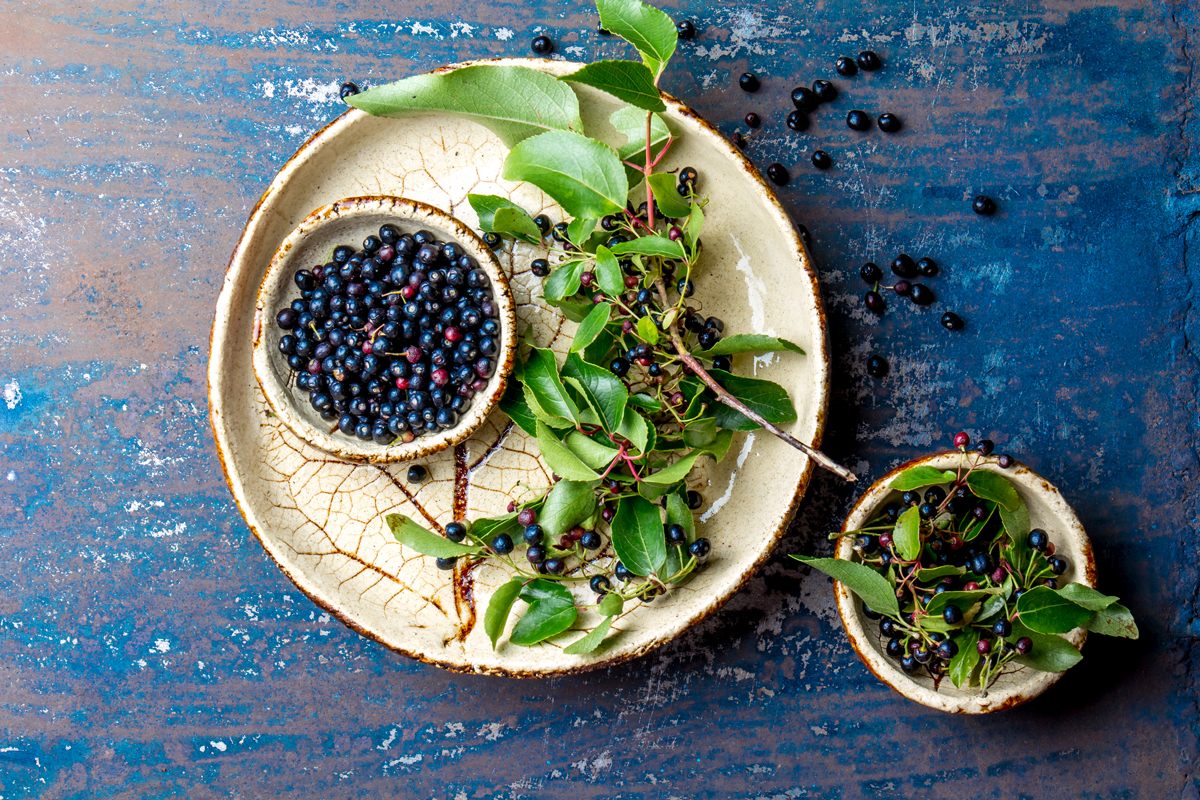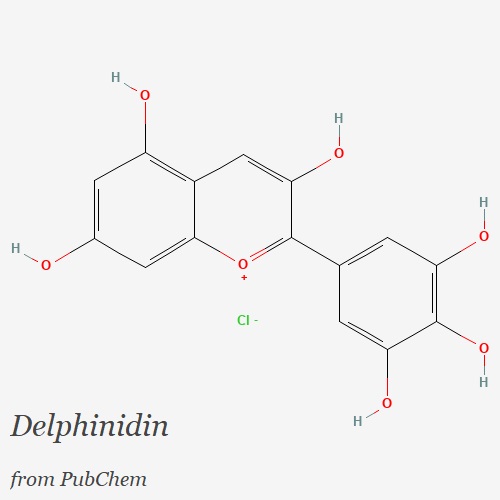
Introduction
Maqui (Aristotelia chilensis) is a fruiting shrub that produces dark purple berries and is native to the rainforests of South America, particularly Chile and Argentina. Known for its exceptional health benefits, maqui has gained considerable attention in recent years as a superfruit. In addition to its medicinal uses, maqui is widely consumed and prepared as a food in various forms such as juice, pulp, jam, and liqueur. In this blog, we will explore the botanical characteristics of maqui, delve into the scientific research on its health benefits, and discover the active ingredients responsible for its remarkable effects, along with their mechanisms of action.
Botanical Characteristics
Aristotelia chilensis is an evergreen shrub that typically reaches a height of 3-4 meters. The fruit is small and round with an intense dark purple color. Native to the temperate rainforests of Chile and Argentina, Maqui thrives in a variety of climatic conditions, including low temperatures, high rainfall, and acidic soils. Maqui berries are rich in antioxidants, particularly anthocyanins, which give them their deep purple color. They are also high in essential vitamins (such as vitamins C and E) and minerals (including calcium, potassium, and iron).
Health Benefits
Scientific research on maqui has revealed numerous health benefits. Some of these benefits include:
Antioxidant Potential
Antioxidants are substances that can help protect the body from the damaging effects of free radicals. Free radicals are highly reactive molecules that are produced as byproducts of normal cellular metabolism and also through exposure to environmental factors such as pollution, radiation, and an unhealthy diet. These free radicals can damage cells and contribute to aging and the development of several diseases, including cardiovascular disease, cancer, and neurodegenerative disorders.
The antioxidant potential of Maqui berries has been extensively studied and found to be superior to that of other berries. Maqui berries have a higher antioxidant capacity and radical scavenging ability than other fruits, as demonstrated by various in vitro antioxidant capacity tests. The antioxidant activity of maqui extracts has been evaluated by several assays, showing significant effects. In addition, the antioxidant activity of maqui berries has been associated with cognitive protection and reduction of oxidative stress markers. Extracts of different Maqui varieties have shown dose-dependent antitumor effects, inhibiting cell growth and nitric oxide (NO) production. Comparative studies have shown that maqui-based blends, such as lemon juice and maqui blend, have superior antioxidant capacity compared to blends containing other fruits. Maqui Blend showed higher antioxidant activity in ABTS and DPPH tests. These results further support the remarkable antioxidant properties of maqui berries.
Anti-inflammatory properties
Maqui berries have received considerable attention for their broad biological potential, particularly for reducing inflammation. In vitro studies have shown that Maqui has anti-adipogenic and anti-inflammatory properties, modulating adipogenesis and inflammatory pathways. It has also been shown to affect nitric oxide (NO) production and improve endothelium-dependent relaxation. Maqui hydroalcoholic extracts have shown beneficial effects on endothelial function, increasing NO bioavailability and reducing plasma levels of cholesterol, LDL and triglycerides. In addition, maqui extracts and the flavonoids they contain (rutin and quercetin) have been found to protect against high glucose- and pyrogallol-induced endothelial dysfunction by promoting NO generation and availability. Studies have shown that aqueous extracts of maqui berries can modulate NO production in a hyperglycemic and/or hyperinsulinemic microenvironment, resulting in improved endothelial function. The anti-inflammatory effects of maqui are associated with inhibition of NF-κB and COX-2 protein expression. In addition, maqui extracts exhibit antioxidant properties by reducing lipid oxidation and decreasing the concentration of thiobarbituric acid reactive species, which serve as an index of lipid peroxidation. In human endothelial cell cultures, maqui juice has been shown to provide dose-dependent protection against hydrogen peroxide-induced intracellular oxidative stress, suggesting its potential antiatherogenic properties.
Cardiovascular Health
Maqui’s high antioxidant content may protect against oxidative stress, thereby reducing the risk of cardiovascular disease. In addition, studies have shown that the methanolic extract of maqui fruit has cardioprotective effects, protecting against ischemia/acute reperfusion-induced cardiac damage in animal models.
Longevity
The possible link between antioxidants and longevity has been investigated in several studies. Although the results in humans are still inconclusive, some research suggests that a diet rich in antioxidants may have beneficial effects on life span and the number of years lived in good health. Studies in animal models such as worms, flies, and mice have shown that increased antioxidant intake can extend their lifespan; many of the bioactive antioxidants used in these studies are found in maqui fruit.
Active compounds and their mechanisms of action

Several bioactive compounds have been identified in maqui berries, including phenolic acids (such as caffeic and gallic acids), flavonols (quercetin, rutin, and myricetin), flavonoids (catechin and epicatechin), and anthocyanins (delphinidin and its derivatives, malvidin, petunidin, cyanidin, and peonidin). Aqueous extracts of maqui fruit are rich in phenolic acids (such as ferulic acid, gallic acid and caffeic acid), flavonoids (quercetin, myricetin, kaempferol, delphinidin and cyanidin) and tannins (ellagitannins). In addition, hydroalcoholic extracts of maqui fruits have high levels of phenolics, hydrophilic compounds (including coumaric, ferulic and gallic acids and proanthocyanidin B) and hydrophobic compounds (such as catechins, quercetin, rutin and anthocyanidins). The total anthocyanin and polyphenol content of maqui berries can vary significantly depending on factors such as growing conditions, harvest time, plant genotype and extraction methods. Notably, maqui berries have higher levels of total polyphenols and antioxidant activity than other fruits known for their phenolic content, including blueberries, pomegranates, blackberries and red raspberries.
Bioavailability of Anthocyanins
Bioavailability is critical to the systemic effects of bioactive compounds such as anthocyanins. Anthocyanins are absorbed at several sites in the body, including the oral cavity, stomach and fasting intestine. Absorption of anthocyanins from the stomach and jejunum can be influenced by their chemical structure. Once in the circulation, anthocyanins undergo extensive first-pass metabolism, with various metabolites detected in plasma. Anthocyanins are rapidly detected in human blood, indicating that absorption begins in the stomach and continues in the small intestine and possibly the colon. Their metabolism and contribution to human health are still under investigation. In a study of Aristotelia chilensis berry extract, two key compounds, delphinidin-3-O-glucoside and cyanidin-3-O-sambubioside, showed rapid and significant increases in serum levels without metabolism. Delphinidin-3-O-glucoside reached peak concentration after approximately 1 hour, while cyanidin-3-O-sambubioside peaked slightly later, in the range of 1 to 4 hours.